Search engine optimization (SEO) is the science of writing copy that elevates your online store to the top ten results on major search engines like Google and the first page results on e-commerce search engines, like Amazon’s A10. These top positions are desirable for high customer conversion rates.
There are many high-impact techniques within the field of SEO. In this blog, the Legacy Retail team will cover two foundational ones: the application of long-tail keywords and voice search optimization. Implementing these will take your online store and product pages to the next level.
Keep reading to learn more.
Research
The first step to optimizing your online store and e-commerce product page for search engines is conducting research to gather relevant keywords. Once gathered, these popular search terms should populate your online store and blogs (front-end and back-end), the descriptions on your product pages, and govern how you categorize your items on e-commerce platforms.
The head vs. tail paradox
General search terms like running shoes, baby stroller, and wireless headphones are called head terms. They are the most basic description of your product. Specific search terms like long-distance trail running shoes, all-terrain baby stroller, and jogging over-ear headphones are called long-tail keywords. They are longer and more specific descriptions of your product.
The paradox: head terms are searched far more often than long-tail keywords, but long-tail keywords have a much greater customer conversion rate. This dynamic occurs for two reasons: 1) there is less competition for audience attention on search engines for long-tail keywords (because of their specificity), and 2) consumers tend to use long-tail keywords when they intend to purchase an item.
Finding keywords manually
A simple manual method for finding relevant and impactful long-tail keywords is to visit the search engine on which you want top ranking. Then in the search bar, type the name of your product as a general search term like running shoes or baby stroller – don’t click enter. Your search bar will extend downwards and become populated with variations of your search term. Observe and take note of these; they represent some of the most popular long-tail keywords.
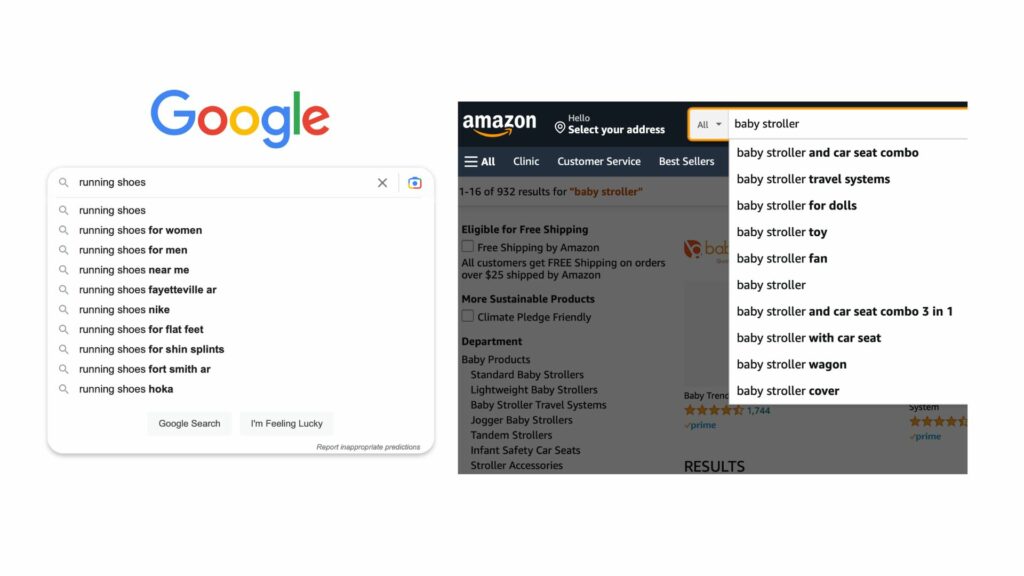
You can deepen your search by taking the long-tail keywords you find and then typing them in the search bar. Again, your search bar will extend downwards and become populated with long-tail keyword variations.
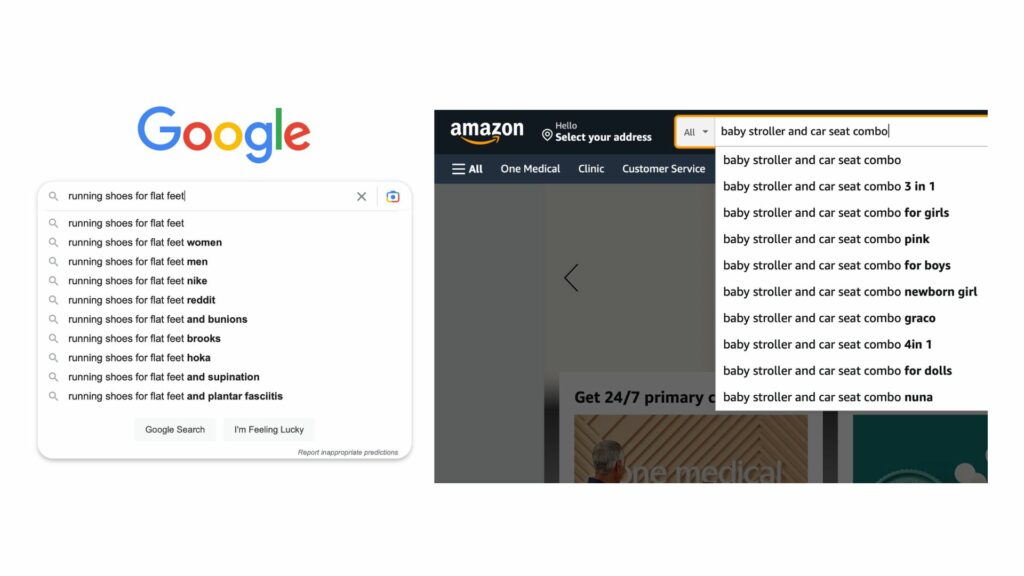
Keyword research programs
In addition to the method above, you can find and gather keywords via keyword research programs. Google has a tool titled Keyword Planner. It is free and has an intuitive interface. This program gives valuable insights like average monthly searches and the level of SEO competition inherent in specific keywords. It also has the functionality to apply filters like “brand or non-brand” and gender (to target particular demographics).
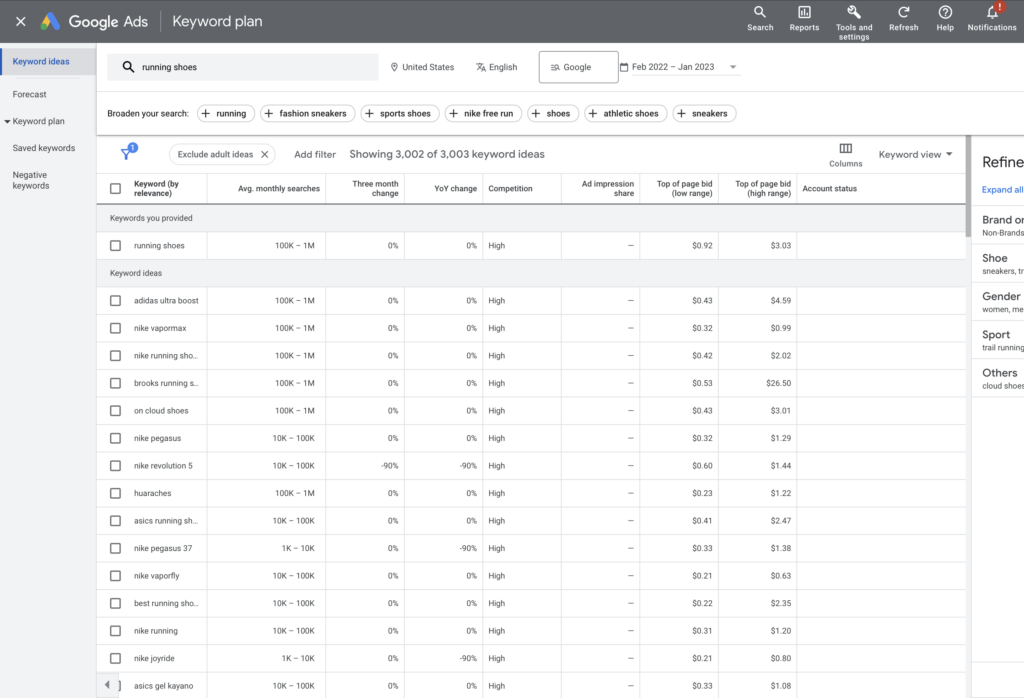
NP Digital has a keyword research program titled AnswerThePublic. It aggregates the questions asked by consumers about topics, brands, or products and presents them in easy-to-read charts. Its main and most unique feature is that its algorithm clusters consumer questions by interrogative words like who, what, when, where, why, and so on.
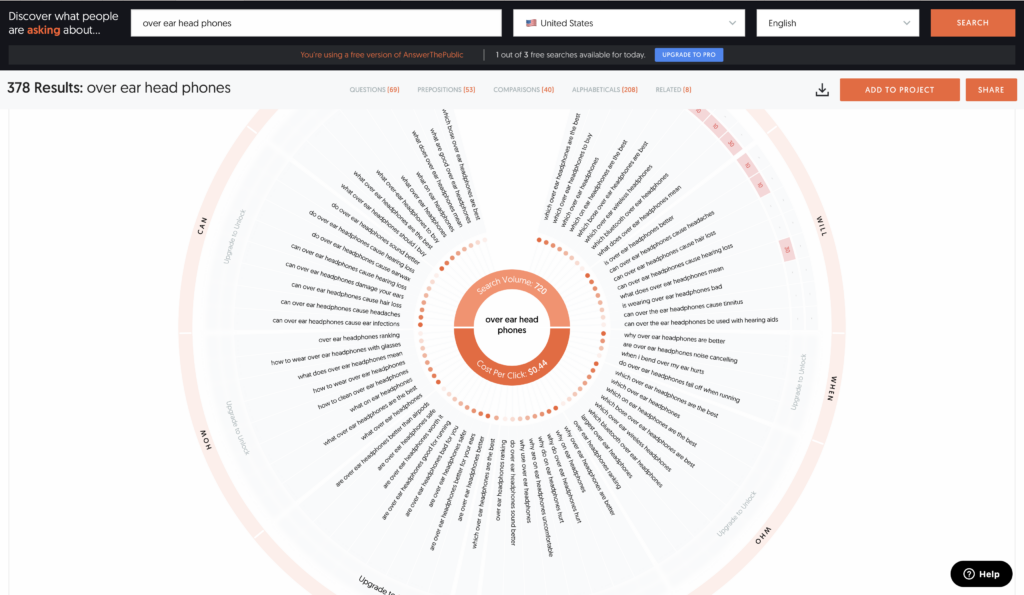
AnswerThePublic is an excellent tool for gathering long-tail keywords for voice search optimization – which is the subject of the next section.
Voice search optimization
There is a growing number of consumers who use voice assistants like Siri and Alexa. This coincides with many consumers beginning the buyers’ journey by using voice search, a fact that is overlooked because of the dominance of type search.
The kinds of search terms in voice search differ from those in type search because the former is conversational. For example, a consumer looking for over-ear headphones might type-search over ear headphones. That same consumer looking for that same item might voice-search Alexa, what are some good over ear headphones? The type-search query is a brief statement; the voice-search is longer, a question, and stated conversationally.
With voice search, the focus deviates somewhat from just keywords and encompasses statements that communicate buyer intent. Long-tail keywords for voice search will be preceded by who, what, when, where, how, why, and so on. Again, a tool like AnswerThePublic will be useful for discovering consumer questions related to a specific product.
Where to place long-tail keywords
Now that you’ve gathered long-tail keywords – both terms and questions – you’ll need to place them in strategic areas to increase the searchability of your online store and e-commerce product page. As a starting point, the Legacy team recommends placing your keywords in the following three categories.
Product pages. It is best practice to write long, descriptive, keyword-heavy descriptions for your online store and product pages.
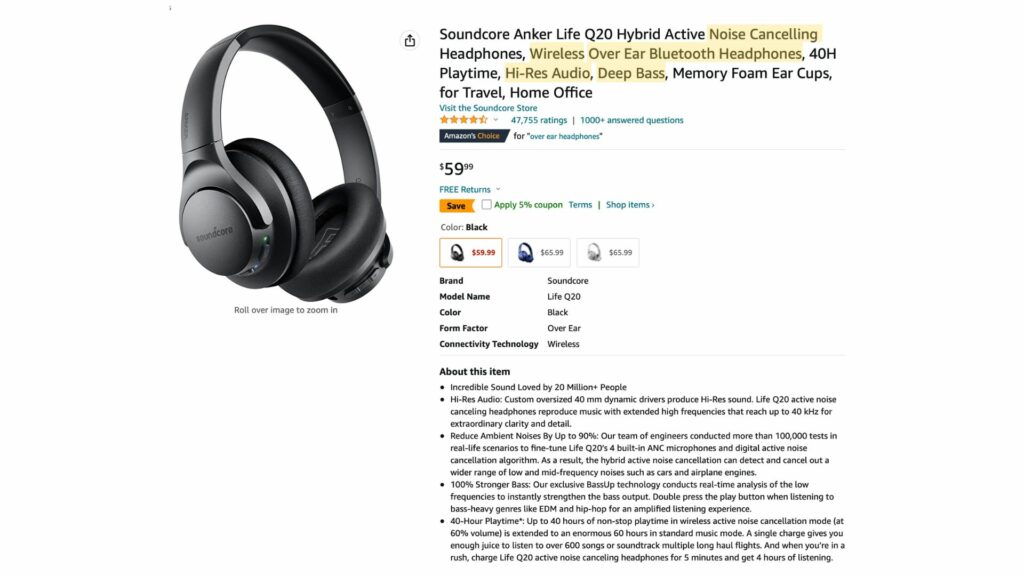
FAQs. The long-tail keywords for voice search or those phrased as questions should go into the frequently asked questions section (FAQs) in your online store. This section is optimal because placing questions all over your website for SEO makes for awkward and ultimately unpersuasive copy.

Metadata. Metadata is information about information. The most popular form are social media hashtags. Beyond that, you can also place tags on the “backend” of the website that runs your online store. If your site is built in WordPress, the process is simple if you invest some time learning about the various places to input metadata.
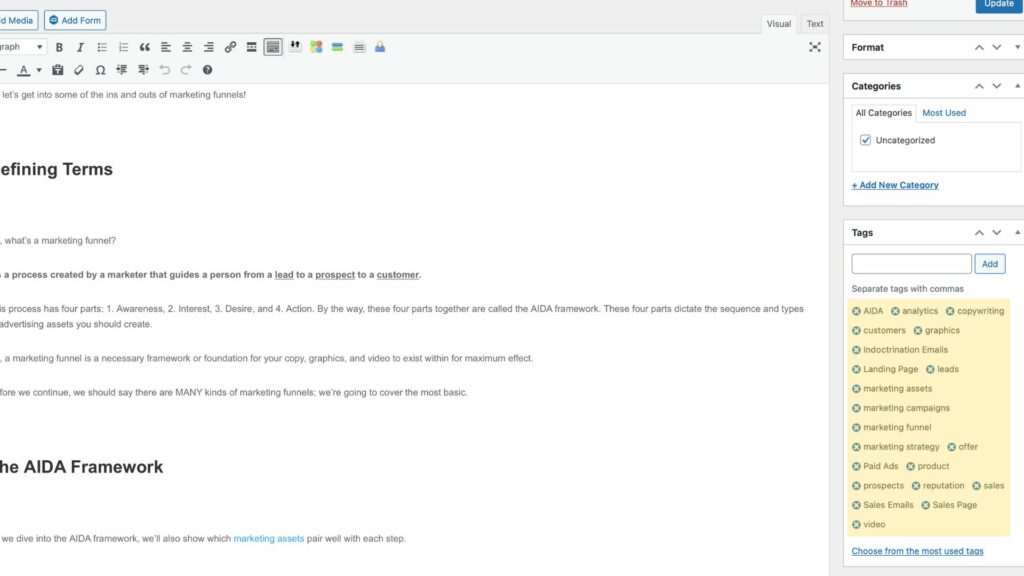
Ready to increase your sales by getting your product page in the top results of e-commerce platforms? Contact Legacy Retail by clicking here.




